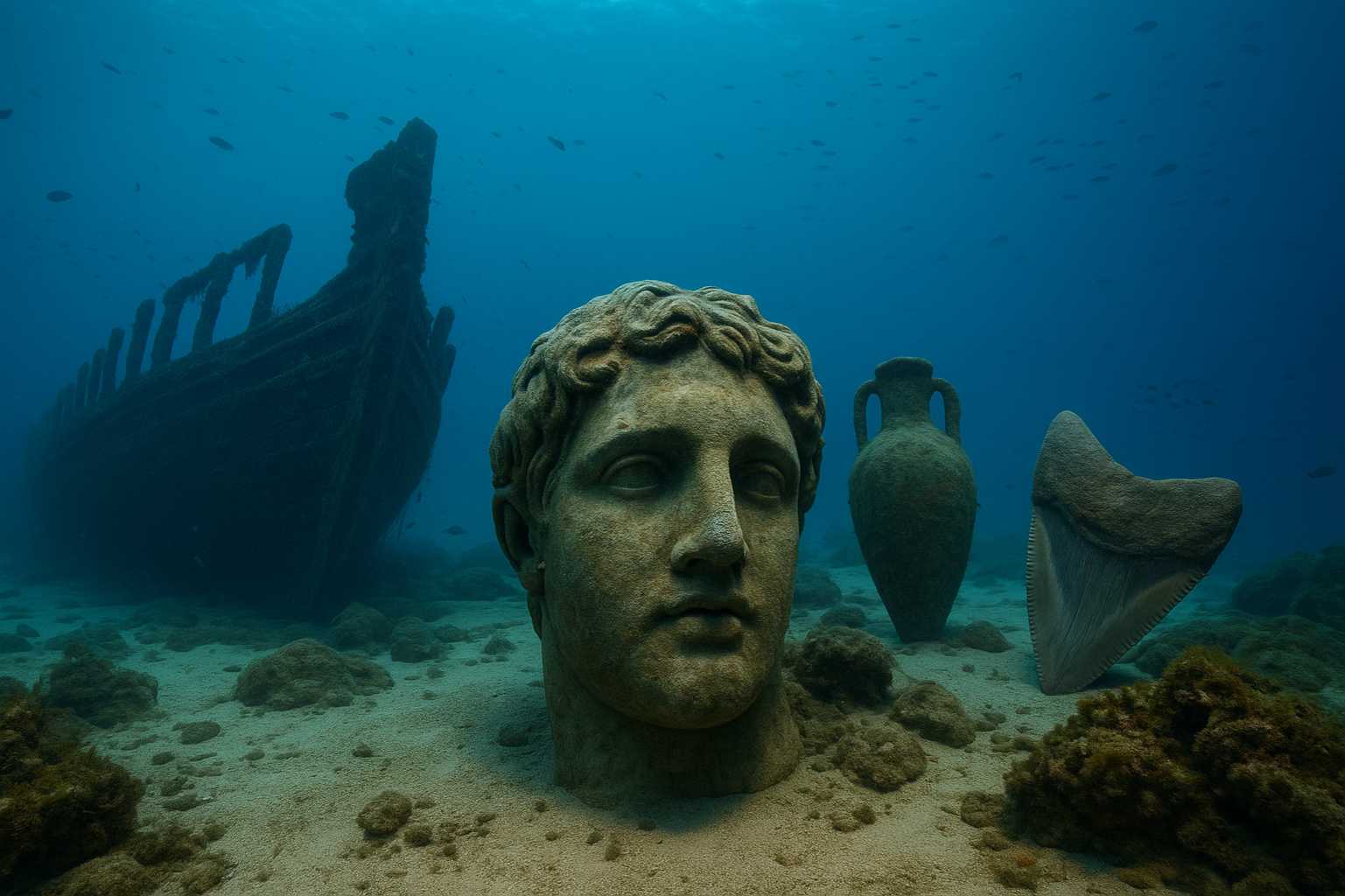For millions of years, the ocean has hidden astonishing secrets beneath its waves—relics of ancient life, lost civilisations, and clues to Earth’s turbulent past. Occasionally, the deep blue yields its mysteries, offering glimpses into worlds long gone. From fossilised creatures older than the dinosaurs to human artefacts buried for centuries, these underwater discoveries remind us how much history still waits in the depths.
1. The Antikythera Mechanism
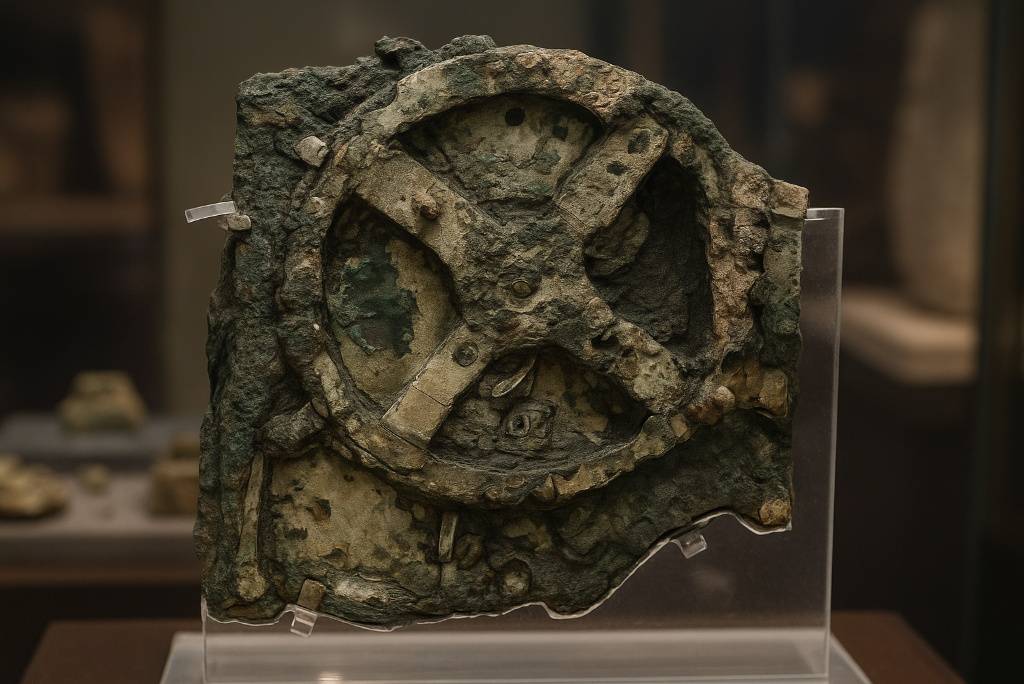
In 1901, sponge divers off the Greek island of Antikythera hauled up bronze fragments that changed our view of ancient technology. The Antikythera Mechanism, dated around 100 BCE, is often called the world’s first analogue computer, designed to predict celestial movements and eclipses.
Its precision gears and complex design show that ancient Greeks possessed advanced engineering skills previously unimagined. Modern X-ray imaging revealed dozens of gears and inscriptions, confirming its astronomical purpose. The device remains one of archaeology’s greatest enigmas, inspiring debates about lost ancient knowledge and evolution. For an in-depth look at this incredible device, check out Smithsonian Magazine’s feature.
2. Megalodon Teeth
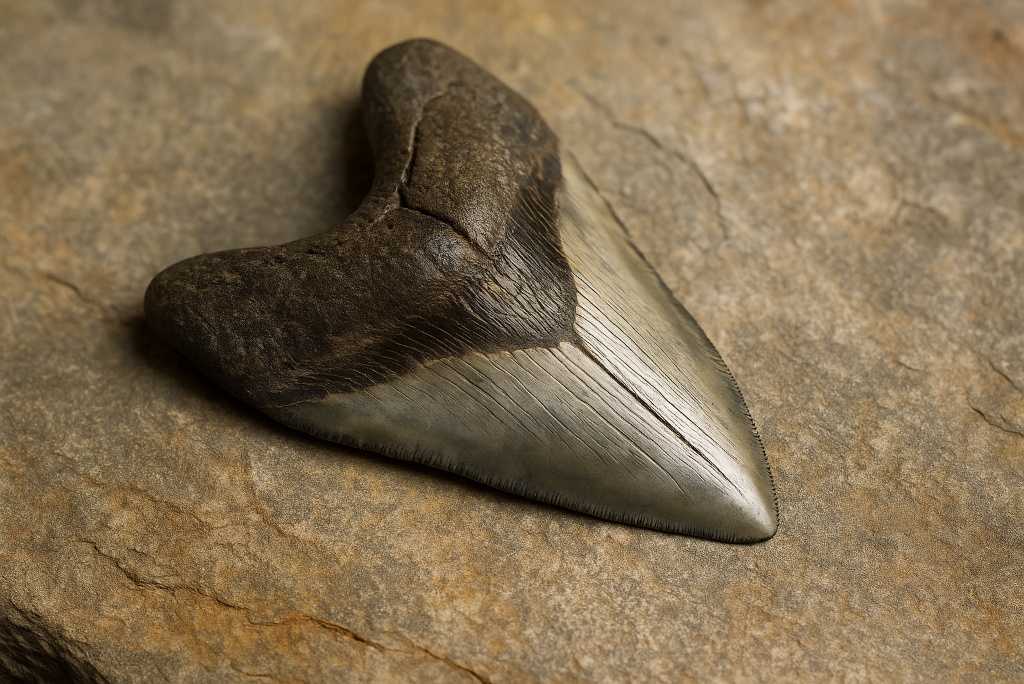
Scattered across the ocean floor, gigantic fossil teeth from Megalodon, an extinct shark species, testify to Earth’s prehistoric seas. These monstrous predators, which lived from around 23 to 3.6 million years ago, could grow over 60 feet long.
Their serrated teeth sometimes measure over seven inches, dwarfing modern great white sharks’ teeth. Collectors and scientists often find them off the U.S. East Coast and in places like the Philippines. Studying these fossils helps researchers reconstruct ancient marine ecosystems and Megalodon’s place atop the food chain.
3. The Baltic Sea Anomaly
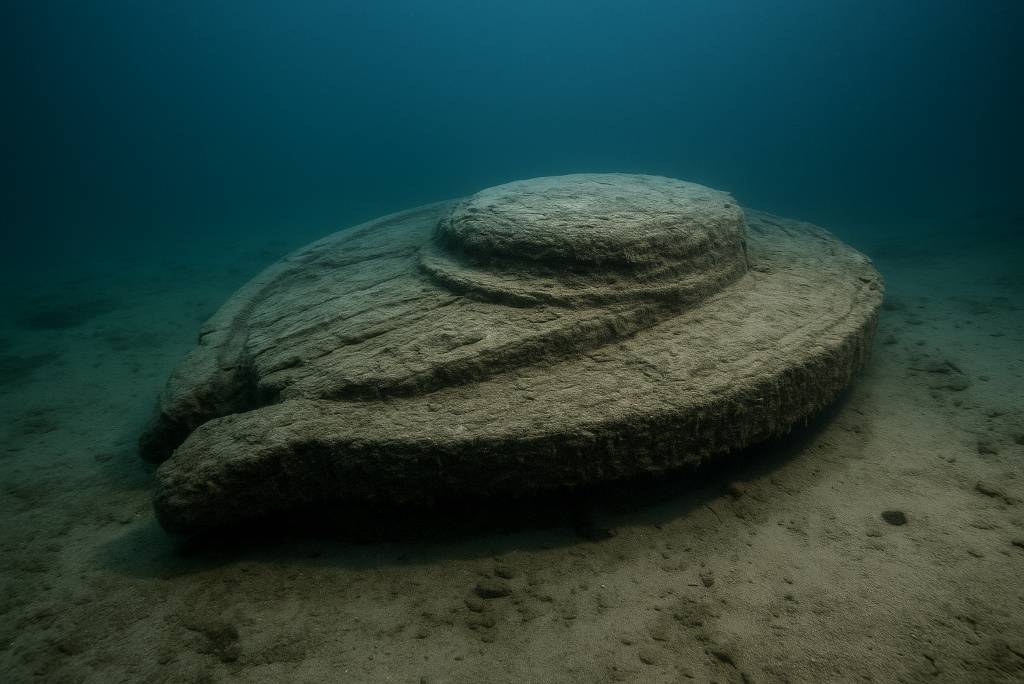
First spotted in 2011 by Swedish treasure hunters, the Baltic Sea Anomaly is a bizarre, 200-foot-wide structure resembling a giant disc, resting 300 feet below the Baltic Sea’s surface. Some have speculated it’s a crashed UFO, while scientists suggest it’s a geological formation shaped by glacial activity. Despite sonar images revealing unnatural-looking lines and angles, no definitive conclusion exists. The anomaly has sparked intense debate among marine geologists, treasure hunters, and conspiracy theorists alike.
4. Black Smokers and Ancient Microbes
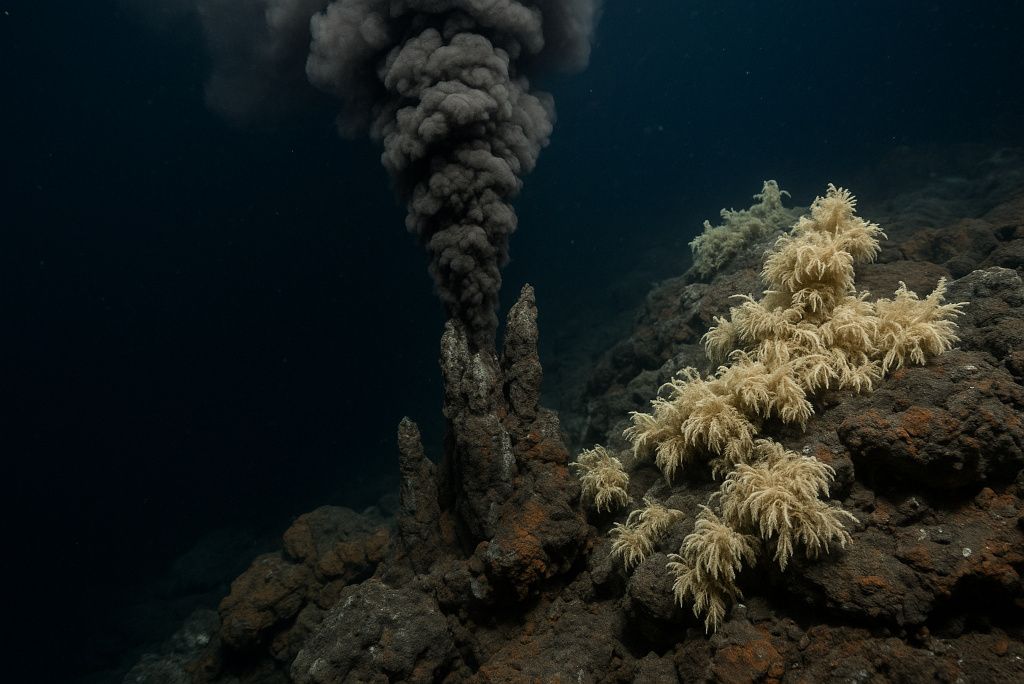
In 1977, researchers exploring the Galápagos Rift discovered black smokers—hydrothermal vents spewing superheated, mineral-rich water. These vents host ecosystems thriving on chemosynthesis instead of sunlight. Scientists found heat-loving microbes around the vents resembling life forms that might have existed billions of years ago on Earth—or possibly on other worlds. Black smokers revolutionised ideas about life’s origins and provided insights into Earth’s early biosphere.
5. The Yonaguni Monument
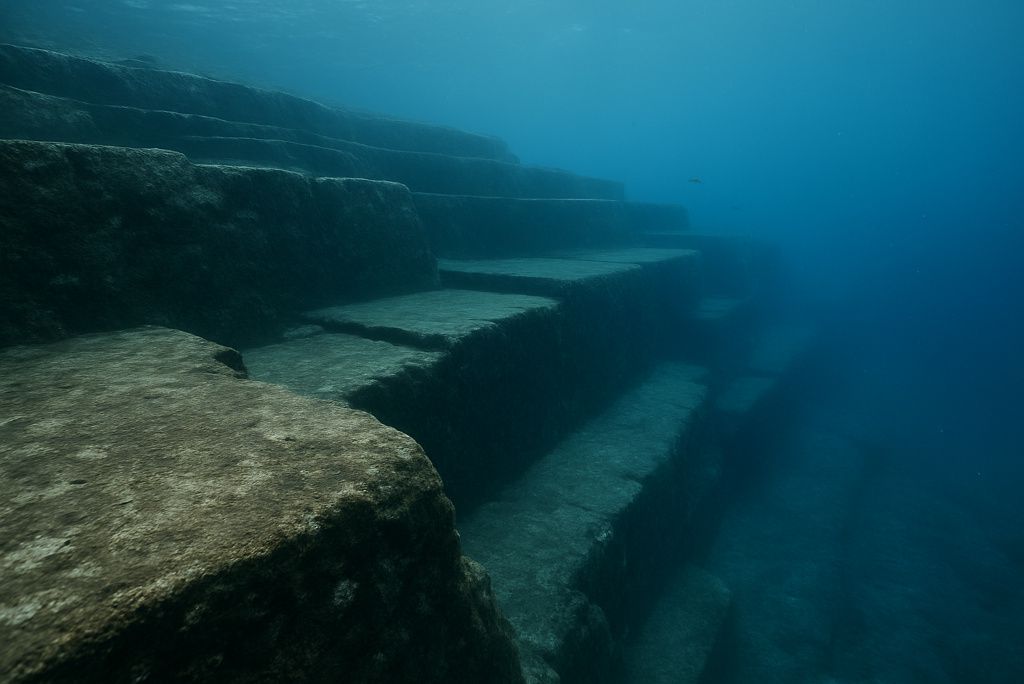
Off Japan’s Yonaguni coast lies a massive underwater stone structure with terraces, steps, and straight edges, discovered in 1986. While some argue it’s a natural formation shaped by tectonic activity, others insist it’s the remains of an ancient city submerged by rising seas 10,000 years ago. The debate fascinates historians and divers alike, symbolising how the ocean might still conceal traces of forgotten civilisations.
6. Oldest Shipwreck Ever Found
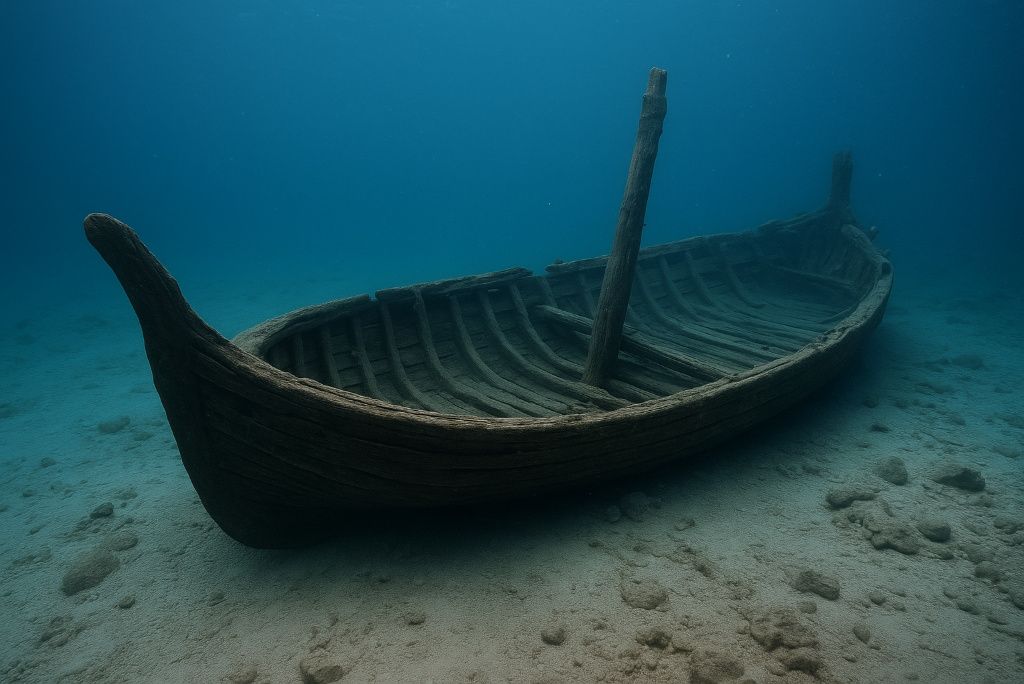
In 2018, researchers using deep-sea robots discovered a Greek trading vessel from around 400 BCE resting over a mile beneath the Black Sea. Remarkably well-preserved due to oxygen-free conditions, its mast, rudders, and benches remain intact. The find offers historians unprecedented insights into ancient seafaring, trade routes, and shipbuilding techniques of classical antiquity. Read more about the shipwreck at BBC News.
7. The Coelacanth Rediscovery
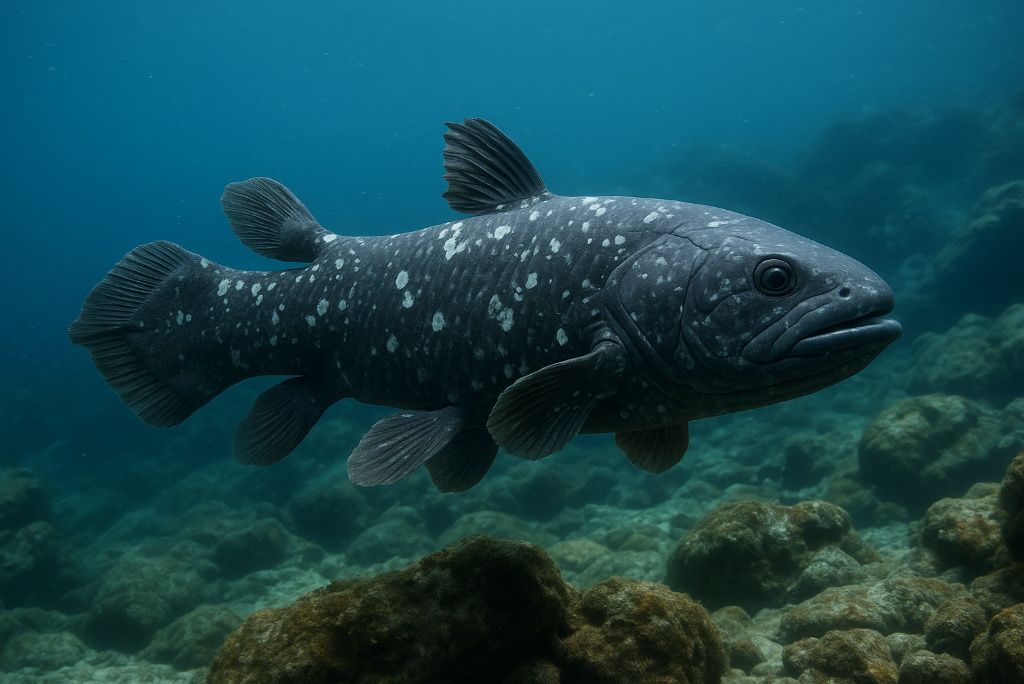
Long thought extinct since the age of dinosaurs, the coelacanth stunned scientists when it turned up in a fisherman’s net off South Africa in 1938. This “living fossil” boasts lobed fins that resemble the limbs of early land vertebrates, offering a crucial evolutionary link. Coelacanths dwell in deep waters and can grow up to six feet long. Their discovery has reshaped our understanding of vertebrate evolution and the possibility of other “extinct” species lurking in the deep.
8. Ancient Sunken Forests
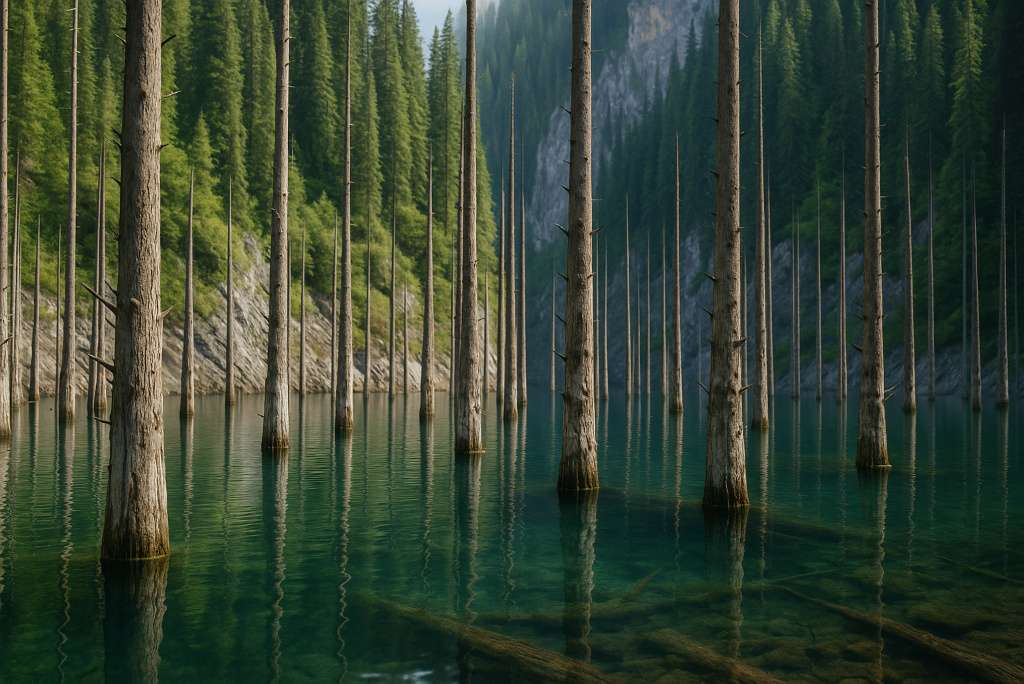
At various low tides off coastlines like Wales and Alabama, tree stumps emerge from beneath the waves—remnants of ancient forests drowned after the last Ice Age. These sunken forests date back 6,000–10,000 years and contain preserved oak, pine, and birch stumps. Such finds help scientists track past climate changes and sea-level rise, offering valuable lessons for modern climate science.
9. The HMS Erebus and HMS Terror
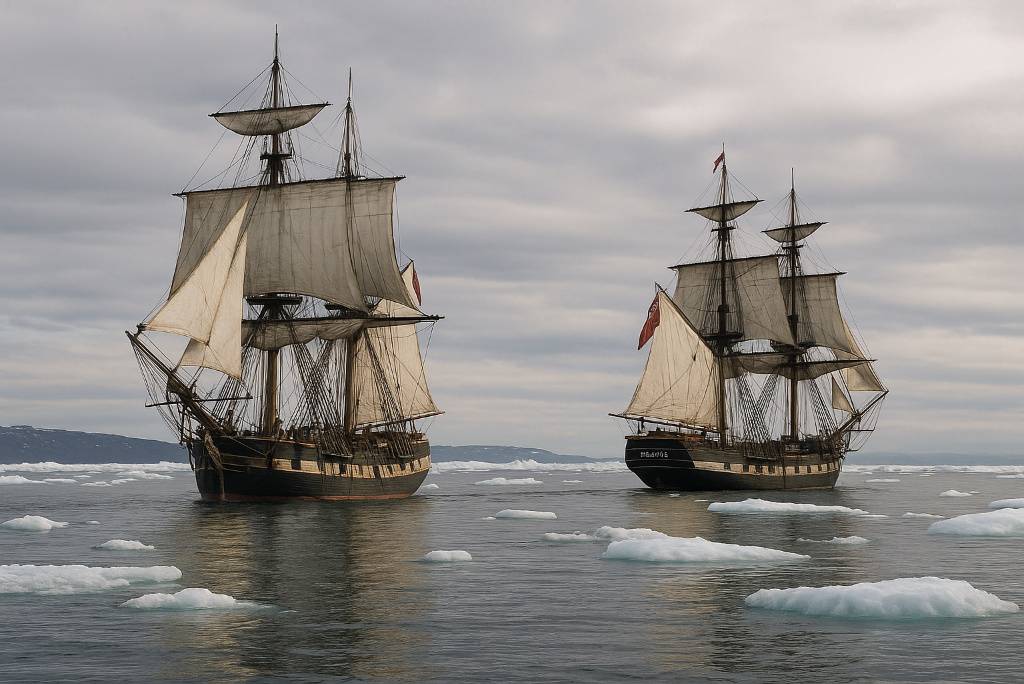
Sir John Franklin’s 1845 Arctic expedition vanished while searching for the Northwest Passage. For over 150 years, the fate of his two ships, HMS Erebus and HMS Terror, remained one of maritime history’s great mysteries. In 2014 and 2016, Canadian explorers found the wrecks in the icy waters of Nunavut. Perfectly preserved in frigid conditions, the ships offer archaeologists new insights into the tragic expedition and 19th-century naval life.
10. The Lost City of Heracleion
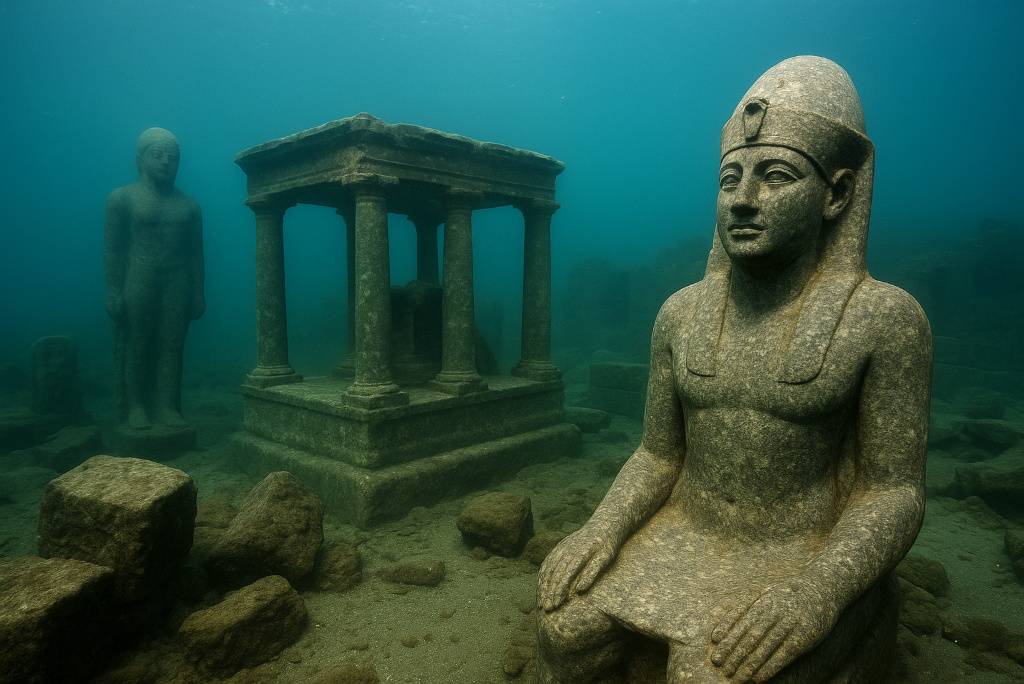
Once a thriving Egyptian port, Heracleion disappeared beneath the Mediterranean by the 2nd century BCE. Rediscovered in 2000 near Alexandria, its submerged ruins revealed colossal statues, inscriptions, and entire temples preserved under layers of sand. The city’s sinking likely resulted from earthquakes and soil liquefaction. Its recovery has reshaped knowledge of ancient trade networks and Egyptian-Greek interactions.
11. Fossilized Ichthyosaurs
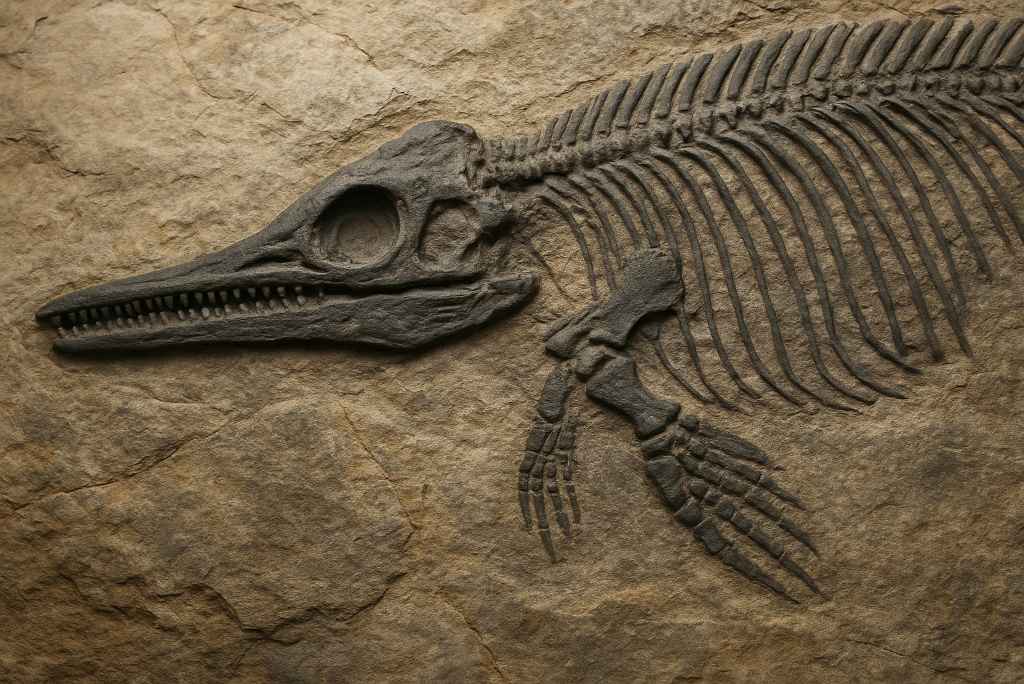
In coastal cliffs and seafloors, palaeontologists have uncovered spectacular fossilised ichthyosaurs—marine reptiles resembling giant dolphins that ruled Earth’s oceans during the Jurassic period. One of the largest, discovered in England in 2022, measures nearly 33 feet long. These fossils shed light on how marine reptiles adapted to ocean life, evolved to gigantic size, and competed in ancient seas.
12. Ancient Roman Shipwrecks off Sicily

Beneath Sicilian waters, divers have found ancient Roman cargo ships loaded with amphorae, bronze statues, and marble columns. These shipwrecks reveal crucial details about Roman trade routes, shipbuilding, and economy. One shipwreck, discovered in 2022 near Isola delle Femmine, carried amphorae containing preserved fish sauce. Such finds help archaeologists piece together everyday Roman commerce.
13. The Mary Rose
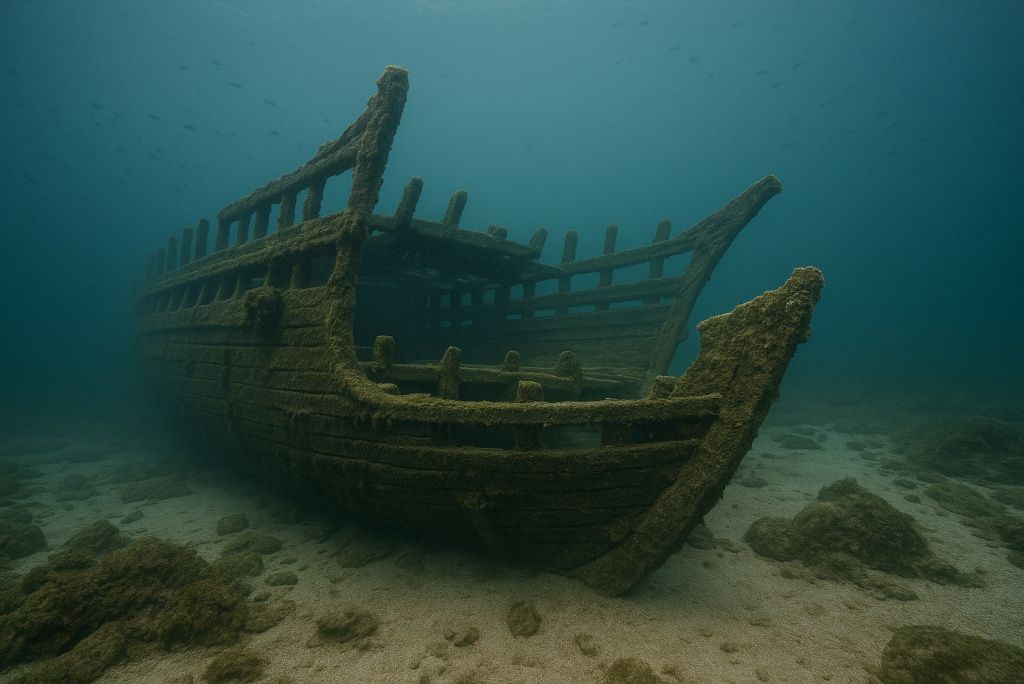
King Henry VIII’s warship, the Mary Rose, sank in 1545 during battle in the Solent near Portsmouth, England. Rediscovered in 1971, it was raised in 1982, carrying thousands of Tudor-era artefacts, including weapons, medical tools, and personal belongings. The preservation of the ship’s wooden hull provides an unparalleled window into 16th-century naval warfare and life aboard ship.
14. The Ghost Fleet of Truk Lagoon
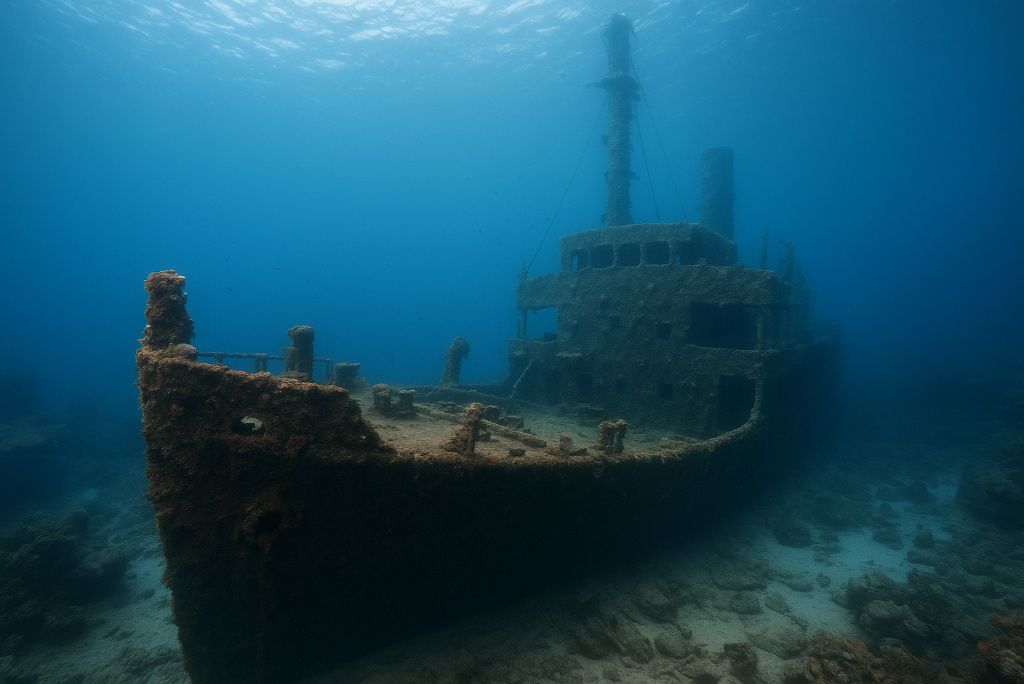
Truk Lagoon, in Micronesia, conceals over 60 Japanese ships sunk during WWII’s Operation Hailstone. Today, the rusting fleet rests eerily beneath clear blue waters, with cargo holds still containing tanks, trucks, and supplies. The wrecks form a haunting underwater museum and one of the world’s top diving destinations.
15. The Oldest Known Saltwater DNA
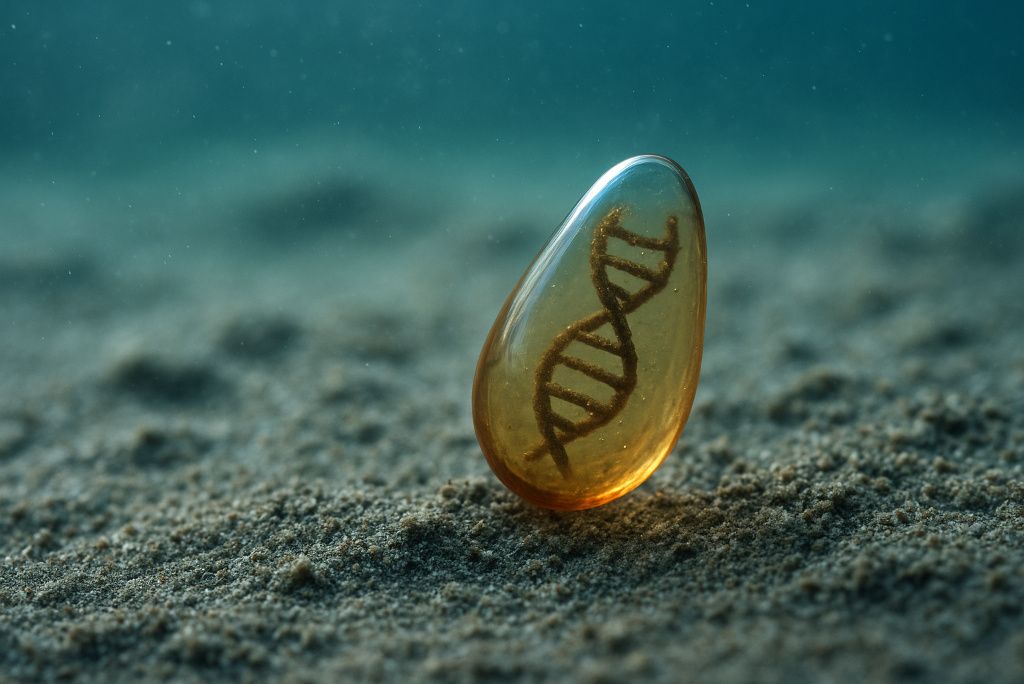
In 2021, scientists extracted ancient DNA from seafloor sediments dating back nearly one million years off Antarctica’s coast. These genetic fragments come from microorganisms and tiny plankton, offering snapshots of ancient ocean temperatures, currents, and ecosystems. This breakthrough helps researchers reconstruct past climate patterns and predict future oceanic shifts amid global warming. Learn about this pioneering research from Nature.
Disclaimer: This article is for informational purposes only and does not substitute for professional advice in fields such as archaeology, paleontology, or marine science.

